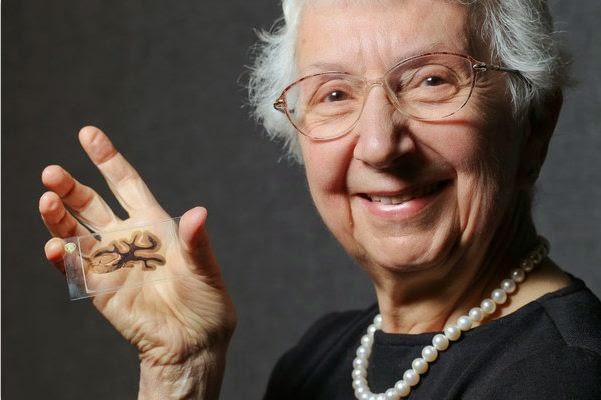Four subgroups of medulloblastoma have been defined based on genetic alterations
:
Wingless (WNT) - WNT medulloblastomas display monosomy 6 and most show nuclear accumulation of the WNT pathway protein beta-catenin, which serves as a useful immunohistochemical screen for this group.
Medulloblasomas with more than 50% nuclear staining for beta-catenin have been shown to have WNT pathway activation,
whereas those with only focal nuclear staining do not. Overall survival for WNT medulloblastomas are dramatically longer than those of other subtypes, and clinical practices surrounding the treatment of this subtype reflects this better prognosis.
Sonic Hedgehog (SHH) - SHH medulloblastomas often show a nodular/desmoplastic histopathology and are associated with a better prognosis in younger children and infants. 9q deletion is characteristic, and MYCN amplifications are occasionally noted.
GAB1 is expressed in the cytoplasm of nearly all SHH medulloblastomas but not in other groups and can be detected imunohistochemically, making it a valuable SHH-group marker. Targeted therapies directed at this subgroup have been established and are entering clinical practice.
"Group 3" - Group 3 medulloblastomas have the worst overall prognosis, have a high incidence of large cell/anaplastic histology, and are very frequently metastatic. This group contains the vast majority of MYC amplified tumors, with MYC amplification being a strong negative prognostic factor. It has been suggested that Group 3 tumors should perhaps be re-named MYC medulloblastomas, but wide agreement has not been reached on this designation. Group 3 tumors occur more commonly in males than females, and are found in infants and children, but almost never in adults.
"Group 4" - Group 4 medulloblastomas classically harbor isochromosome 17q; but as the molecular pathogenesis of this group is not currently clear, the generic name "Group 4" remains the consensus designation. Although isochromosome 17q is also seen in Group 3 tumors, it is much more common in Group 4.
KCNA1 has been suggested as an immunohistochemical marker for this group, but this requires validation. The only other notable cytogeneic change seen in Group 4 tumors is loss of X chromosome, which is seen in 80% of females with this tumor subtype. Group 4 patients have an intermediate prognosis, similar to patients with SHH tumors.
In conclusion, the worst prognosis is associated with Group 3 medulloblastoma; Group 4 and SHH have an intermediate prognosis; and WNT medulloblastoma tends to have the best prognosis.


